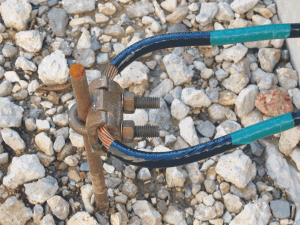
Photo 1. Does this installation meet code?
Yesterday I got a call from a friend who thought he had an electrical problem at his home. He said, “I was digging in the flower bed out back and hit a heavy gauge green wire with a steel rod attached to it.”
He assumed it was a ground-wire but with two small children at home and very little knowledge about electricity, he was very concerned for their safety. He peppered me with questions, “Is there a chance of shock? Should it be buried deeper?”
After a few clarifying questions, I was comfortable that it was his service ground, that it was physically intact and that it conformed to the standard practice in our area.
His call made me remember back to my days working at the electrical utility. As part of my job, we regularly did ground impedance measurements at substations and on the distribution system. We used a simple 2-step Ohm’s law test to approximate the impedance of an existing electrical ground. With the ground intact, we would measure the current flowing in the single grounding conductor and then, treating the ground connection as an energized primary conductor (because in the event of a distribution ground fault, full line-to-ground voltage would be present), we had a qualified technician wearing the required PPE disconnect the ground wire from the ground rod. We then measured the voltage between the ground wire and the ground rod. It was simple; the ground impedance equalled the voltage divided by the current.
The work practices may be somewhat different today than in the early 1990s but over the five years I was involved in doing these tests, typically the voltage when the ground connection was disconnected was less than 5 volts and rarely did it exceed 10 volts (the highest reading I ever recorded was about 90 volts which we traced to a ground fault at a neighboring service). Yet, we prepared for the test as if the voltage would read 7200 volts (the distribution system line voltage). This meant certified rubber gloves, adhering to the limits of approach, and competent technicians — every single time that we disconnected a ground connection. This applied whether we were working on a 120/240 V service or on the distribution system since they share a common multi-grounded Y system.
For the many homeowners, non-technical observers and the occasional powerline technician (surprisingly) who watched us do these tests, our preparation seemed like overkill but it always left them with a very healthy respect of electricity and the grounding system.
Grounding is typically not well understood, yet grounding is arguably the most critical part of the electrical safety system. Grounding remains an important consideration during the design and construction phase of a project. But what happens after the electrical system is installed? Perhaps because grounding is passive (i.e., not appearing to do much most of the time, not visible, not well understood, etc.), it can more easily be taken for granted.
Here is a simple exercise that you can use to help avoid becoming complacent about grounding safety and to help keep from taking it for granted. It is framed in the form of questions that are meant to stimulate discussions with those whom you work (or other groups) about the importance of electrical system grounding.
To do this exercise, have your colleagues reflect on each question and give them time to write their responses. It is not necessary to have complete answers to all of the questions. Then in small groups, have them share their experiences and answers. They will learn a lot from each other.
1. Describe an experience when electrical system grounding played a part in your personal safety and well-being. What is the significance of this experience in your life?
2. Describe an experience when improper electrical grounding resulted in tragedy or loss. How did this affect you or others?
3. If you had to identify one thing about grounding for which you are grateful, what would it be?
4. Is there something about grounding that you do not completely understand? Identify this “something” as much as possible. How can you learn more about it?
This exercise brings about a greater understanding of grounding, the importance of grounding, and a greater sense of gratitude for the grounding system.
And yeah, my last piece of advice to my friend who was digging in his garden — “Do not, repeat,do not disconnect the green wire from the steel rod.”











Find Us on Socials